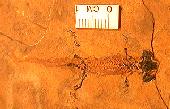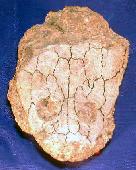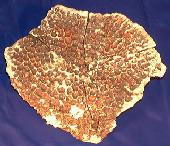 Amphibians
Amphibians
|
|
What are Amphibians? Amphibians spend part of their life cycle in water and part on land, hence their name: “amphibios” comes from Greek and means “double life.” The larval stage is always spent in the water, and most larvae metamorphose into adult forms to live on land. Frogs, toads, salamanders, and newts are common modern amphibians. Fossil forms, for example the bizarre “horned” nectrideans, are less familiar. The evolutionary relationships of amphibians have not been completely determined, in part because there is a large gap between the fossil record of the extinct relatives (Carboniferous to Permian) and the modern amphibians (Jurassic to Quaternary). First known fossil occurrence: Carboniferous. Last known fossil occurrence: Quaternary. This group has living relatives. Cool Amphibians links: Search for images of Amphibians on Google |
|



